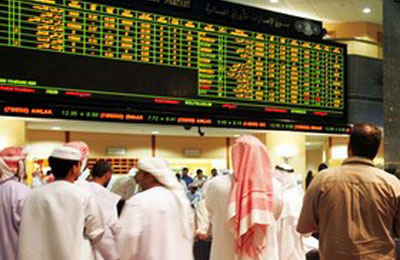
Gulf Islamic lenders' product costs shrinking
Abu Dhabi, February 22, 2014
The extra costs which Islamic banks in the Gulf charge consumers relative to conventional banks appear to be falling, according to a study by credit rating agency Standard & Poor's.
For years, bankers have assumed that Islamic institutions charge higher costs because of several factors, including the relative complexity of sharia-compliant products compared to conventional ones, and the fact that Islamic financial markets tend to be younger, smaller and less liquid.
Other factors that may push up costs are a lack of clear regulation, in an industry where scholars may issue contradictory rulings, and adverse tax treatment, since Islamic deals often involve multiple asset transfers.
Now the cost gap for Gulf banks rated by S&P seems to narrowing, to as little as 30 basis points in the first half of 2013 from a high of 110 bps in 2009.
The study used financial data from 2007 to 2013 to calculate the ratios of interest income to average assets for conventional banks and the equivalent ratios for Islamic institutions, said Paris-based Mohamed Damak, primary credit analyst at S&P.
Damak stressed the ratios were not perfect measures of the cost of banking products, and that other, macroeconomic factors could be influencing the numbers.
"The product mix might vary but the banks selected allow a clear comparison, as there is no data that allows comparing product by product. This is not a perfect measuring stick, but it gives a very good proxy for it."
Reasons for the drop in extra costs are not yet entirely clear but they may include the industry's growing familiarity with certain types of Islamic financial contracts and transactions, which could be leading to lower development costs, said Damak.
"The more you have standardisation in Islamic finance and the more products are commoditised, then you will see product costs falling. This is why standardisation is so important in Islamic finance."
Increased economies of scale could also be a factor, as Islamic banks in Gulf countries have been growing faster than conventional peers and now command roughly a quarter of all banking assets; in other countries such as Pakistan and Indonesia, the industry is still in single-digit territory.
It is not clear whether the cost gap might fall further or even disappear, Damak added. "This is harder to tell. This depends on continued standardisation and commoditisation of products in Islamic finance."
Outside the Gulf, it is not certain whether Islamic banks charge consumers similar cost differentials or whether the gap is narrowing, Damak said.
If they do charge higher costs, this may be more of an obstacle for their business expansion than the cost gap in the Gulf, where consumers are wealthy and therefore perhaps less price-sensitive.
In North Africa, "a large portion of customers has a natural interest toward Islamic products but pricing will be the key factor of success in the equation."-Reuters







